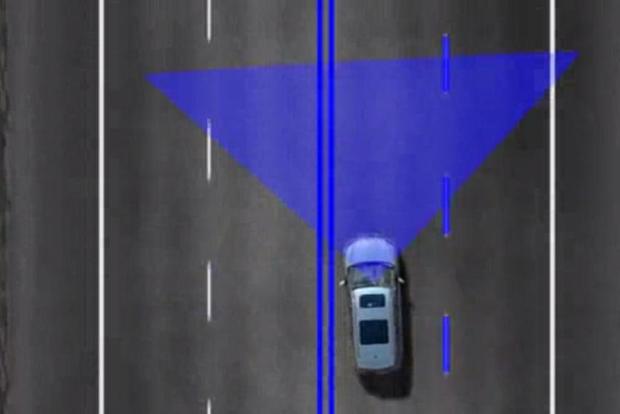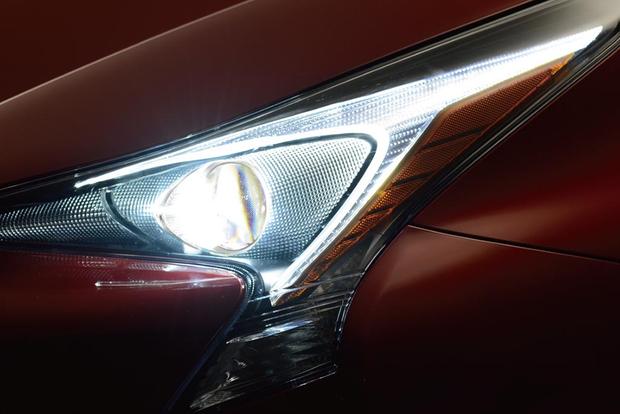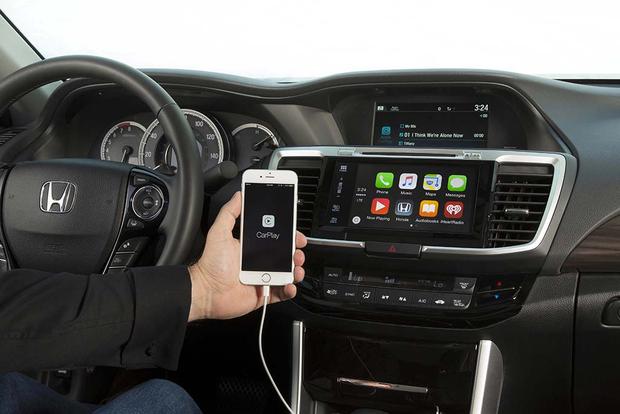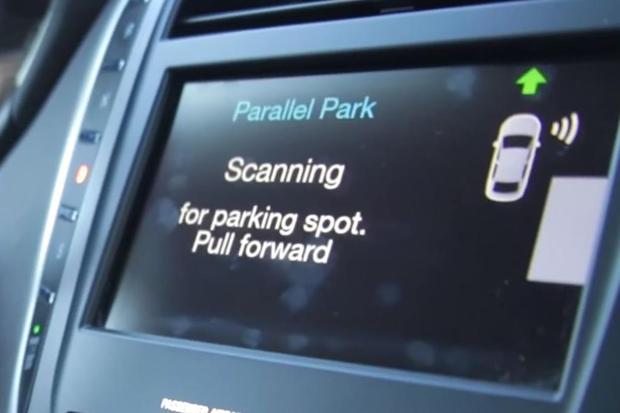
For
many drivers, the upcoming new year will include a car purchase. If
you're among those drivers, you might want to know exactly what exciting
new gadgets you should expect from your next car this year --
especially if you're a technophile looking for the latest and greatest
in terms of automotive features and equipment. We're here to help, as
we've rounded up some of our favorite must-have automotive technology
for 2016 -- features that are starting to find their way into a wider
variety of new vehicles.

Virtually everyone has had some experience with backup cameras -- and if you haven't, you will soon, when backup cameras become mandated on all cars in a few years. But many new models use even more advanced camera systems than you might expect, touting multiple angles or even a top-down view of your car.
Why It's Cool
Advanced Backup Cameras
What Is It?Virtually everyone has had some experience with backup cameras -- and if you haven't, you will soon, when backup cameras become mandated on all cars in a few years. But many new models use even more advanced camera systems than you might expect, touting multiple angles or even a top-down view of your car.
Why It's Cool
Even
drivers who are experts at maneuvering in tight spaces will tell you
that it's nice to have as many aids as you can get. The latest crop of
advanced backup cameras is making it easier than ever to maneuver in the
tightest of spaces by giving you a look angles you couldn't see before.
The best new backup cameras even make it seem like there's a small
helicopter with a camera hovering over your car by giving you an
excellent top-down view from every angle.
Is It Worth the Money?
It depends. If you often find yourself parking in tight spaces or maneuvering in close quarters (like a narrow parking garage, for example), there's no doubt you'll want a more advanced backup camera. If you spend all your time driving on wide open roads outside the city, you might not need one.
Autotrader's Top Pick: Infiniti's excellent Around View Monitor, also offered on some Nissan models, remains the best in the business by offering an excellent 360-degree view of your surroundings. The new Toyota Prius has the feature as well, but they managed to remove the hard lines on-screen that separate each camera's view giving it a more uniform look.
Is It Worth the Money?
It depends. If you often find yourself parking in tight spaces or maneuvering in close quarters (like a narrow parking garage, for example), there's no doubt you'll want a more advanced backup camera. If you spend all your time driving on wide open roads outside the city, you might not need one.
Autotrader's Top Pick: Infiniti's excellent Around View Monitor, also offered on some Nissan models, remains the best in the business by offering an excellent 360-degree view of your surroundings. The new Toyota Prius has the feature as well, but they managed to remove the hard lines on-screen that separate each camera's view giving it a more uniform look.
Augmented Reality Owner's Manual
What Is It?These days, virtual owner's manuals -- instead of the older paper ones -- are fairly common. But an augmented reality owner's manual takes things a step further by allowing you to get more information about a specific part of a car by simply pointing your owner's manual at it.
Why It's Cool
Can't figure out how to change the radio station? Turn up the air conditioning? Adjust the mirrors? Years ago, you'd be thumbing for an owner's manual looking for answers. With an augmented reality owner's manual, all you need to do is point your smartphone or tablet at the item in question, and voila: it'll pull up detailed information in the form of videos, guides or other helpful tips about how to use whatever you're struggling with.
Is It Worth the Money?
The augmented reality owner's manual is just taking off, but we think it'll largely be offered as a free supplement to standard owner's manuals as it becomes more common in the future.
Autotrader's Top Pick: Hyundai is on the leading edge of this technology, as its latest Sonata
boasts an augmented reality owner's manual app dubbed Virtual Guide.
The app offers informational guides, videos and more, going well beyond
the scope of a normal owner's manual.

Automated steering systems can work in two ways. Relatively common lane-keep assist systems can steer you back into your lane if you aren't paying attention and you start to drift out. Less common semi-autonomous steering systems can actually steer for you -- at least for a few seconds.
Why It's Cool
Automated steering systems really are the beginning of the autonomous car -- and that's cool by anyone's measure. Lane-keep assist is certainly an excellent feature, because it can keep you headed on your course if you start to doze off or become distracted. But partially autonomous steering, which is now offered in a number of cars, can actually steer for you, even on relatively curvy roads -- at least for a few seconds, until the system asks you to retake the wheel.
Automatic Steering
What Is It?Automated steering systems can work in two ways. Relatively common lane-keep assist systems can steer you back into your lane if you aren't paying attention and you start to drift out. Less common semi-autonomous steering systems can actually steer for you -- at least for a few seconds.
Why It's Cool
Automated steering systems really are the beginning of the autonomous car -- and that's cool by anyone's measure. Lane-keep assist is certainly an excellent feature, because it can keep you headed on your course if you start to doze off or become distracted. But partially autonomous steering, which is now offered in a number of cars, can actually steer for you, even on relatively curvy roads -- at least for a few seconds, until the system asks you to retake the wheel.
Is It Worth the Money?
If you spend a lot of time on the highway, you might find these systems to be particularly valuable -- especially when paired with adaptive cruise control.
Autotrader's Top Pick: Although many top luxury cars have semi-autonomous steering systems, it's also offered in more reasonably priced models like the Acura TLX and Infiniti Q50 as well as non-luxury models like the Subaru Legacy and Chrysler 200. That means you don't need to spend big money in order to get this fascinating new technology.

Two new headlight technologies are beginning to emerge: LED headlights, which offer excellent brightness, long-lasting bulbs, and automatic high beams, which can turn on or off your high beams automatically in order to increase your field of vision at night.
Why It's Cool
LED headlights are cool because they save you money and improve your vision on the road. On the money-saving front, LED headlights will effectively never burn out, which means you'll never have to pony up the money for a new bulb or drive with one headlight out. Vision improvement is obvious, as LED headlights offer excellent illumination.
If you spend a lot of time on the highway, you might find these systems to be particularly valuable -- especially when paired with adaptive cruise control.
Autotrader's Top Pick: Although many top luxury cars have semi-autonomous steering systems, it's also offered in more reasonably priced models like the Acura TLX and Infiniti Q50 as well as non-luxury models like the Subaru Legacy and Chrysler 200. That means you don't need to spend big money in order to get this fascinating new technology.
Headlight Technology
What Is It?Two new headlight technologies are beginning to emerge: LED headlights, which offer excellent brightness, long-lasting bulbs, and automatic high beams, which can turn on or off your high beams automatically in order to increase your field of vision at night.
Why It's Cool
LED headlights are cool because they save you money and improve your vision on the road. On the money-saving front, LED headlights will effectively never burn out, which means you'll never have to pony up the money for a new bulb or drive with one headlight out. Vision improvement is obvious, as LED headlights offer excellent illumination.
Meanwhile,
many modern cars also now boast automatic high beams, which no longer
leave the high beams up to the driver. Instead, the driver switches the
system to automatic and the high beams automatically illuminate on dark
roads and dim when necessary.
Is It Worth the Money?
If you spend a lot of time driving at night or in rural areas, you'll probably agree that just about any technology that can improve your vision is important. These features are no exception -- especially considering how quickly they're becoming commonplace in modern cars. If you drive mostly in the city or suburbs, this technology might not be as crucial.
Autotrader's Top Pick: Acura's lineup now comes standard with LED headlights -- even the base-level ILX. Meanwhile, a wide range of cars now offer automatic high beams, including midsize sedans like the Hyundai Sonata and Toyota Camry.

Is It Worth the Money?
If you spend a lot of time driving at night or in rural areas, you'll probably agree that just about any technology that can improve your vision is important. These features are no exception -- especially considering how quickly they're becoming commonplace in modern cars. If you drive mostly in the city or suburbs, this technology might not be as crucial.
Autotrader's Top Pick: Acura's lineup now comes standard with LED headlights -- even the base-level ILX. Meanwhile, a wide range of cars now offer automatic high beams, including midsize sedans like the Hyundai Sonata and Toyota Camry.
Improved Smartphone Infotainment Integration
What Is It?
Just
a few years ago, we were happy when cutting-edge automotive technology
meant that we could use Bluetooth to connect our phone to our vehicle in
order to make a call and maybe even stream music from our phone to the
car's audio system. Now, many cars allow a smartphone's screen to be
duplicated on a car's infotainment screen, thanks to systems like Apple
CarPlay and Android Auto.
Why It's Cool
Since the advent of the infotainment system and the smartphone, drivers have been clamoring for one feature that combines them both: a technology that allows the smartphone screen to find its way on to the vehicle's screen in order to make it easier -- and safer -- to use vehicles and phones simultaneously. Android Auto and Apple CarPlay aren't perfect, but they come as close as possible to giving us easy in-car access to our smartphone screen.
Is It Worth the Money?
Why It's Cool
Since the advent of the infotainment system and the smartphone, drivers have been clamoring for one feature that combines them both: a technology that allows the smartphone screen to find its way on to the vehicle's screen in order to make it easier -- and safer -- to use vehicles and phones simultaneously. Android Auto and Apple CarPlay aren't perfect, but they come as close as possible to giving us easy in-car access to our smartphone screen.
Is It Worth the Money?
Given
that these features are typically offered as relatively inexpensive
standalone options, we think they're usually worth the money --
especially if you often find yourself reaching for your smartphone while
you're behind the wheel.
Autotrader's Top Pick: Formerly only the domain of luxury cars, the latest smartphone integration is now trickling down into regular models. These days, you can find Apple CarPlay and Android Auto in a wide range of today's most popular models, from the Honda Civic to the new Chevrolet Malibu.

Imagine using your cellphone to locate your car, start it, call for roadside assistance, and even get health reports on your car's current status. Now, you don't have to imagine it: The futuristic-sounding technology is now available from several automakers.
Why It's Cool
Few things are cooler than the idea of starting your car from your cellphone. And it doesn't stop there, as some of the latest smartphone vehicle management systems get seriously in depth, offering you the ability to do just about everything with your phone except for actually drive the car. Some automakers are even testing systems where you can bring your car to a parking spot, hop out and use your phone to tell it to park -- though that technology isn't here just yet. Maybe it'll be on next year's list.
Autotrader's Top Pick: Formerly only the domain of luxury cars, the latest smartphone integration is now trickling down into regular models. These days, you can find Apple CarPlay and Android Auto in a wide range of today's most popular models, from the Honda Civic to the new Chevrolet Malibu.
Smartphone Vehicle Management
What Is It?Imagine using your cellphone to locate your car, start it, call for roadside assistance, and even get health reports on your car's current status. Now, you don't have to imagine it: The futuristic-sounding technology is now available from several automakers.
Why It's Cool
Few things are cooler than the idea of starting your car from your cellphone. And it doesn't stop there, as some of the latest smartphone vehicle management systems get seriously in depth, offering you the ability to do just about everything with your phone except for actually drive the car. Some automakers are even testing systems where you can bring your car to a parking spot, hop out and use your phone to tell it to park -- though that technology isn't here just yet. Maybe it'll be on next year's list.
Is It Worth the Money?
These apps are usually free of charge (or available with a small fee) through the iPhone App Store or Google Play -- and they're included on many cars when you spring for their latest infotainment systems.
Autotrader's Top Pick: You'd be surprised at just how many automakers offer vehicle management smartphone apps these days. Vehicles equipped with OnStar have this feature, OnStar is available on wide range of cars in a variety of price categories. Some of our favorite apps are the My BMW Remote App -- which is tremendously easy to use and boasts lock, unlock, horn and light flashing functions, among many others -- and the MyLincoln Mobile app, which lets you start your car remotely and speak to support staff.

Self-parking systems are exactly that: systems that use sensors, cameras and other in-car technology to automatically park your car in parallel (or, sometimes, perpendicular) parking spaces without you having to ever lift a finger -- or a toe.
These apps are usually free of charge (or available with a small fee) through the iPhone App Store or Google Play -- and they're included on many cars when you spring for their latest infotainment systems.
Autotrader's Top Pick: You'd be surprised at just how many automakers offer vehicle management smartphone apps these days. Vehicles equipped with OnStar have this feature, OnStar is available on wide range of cars in a variety of price categories. Some of our favorite apps are the My BMW Remote App -- which is tremendously easy to use and boasts lock, unlock, horn and light flashing functions, among many others -- and the MyLincoln Mobile app, which lets you start your car remotely and speak to support staff.
Self-Parking Systems
What Is It?Self-parking systems are exactly that: systems that use sensors, cameras and other in-car technology to automatically park your car in parallel (or, sometimes, perpendicular) parking spaces without you having to ever lift a finger -- or a toe.
Why It's Cool
Imagine a world where you never have to parallel park again. Instead, you just roll up to the space you want, push a button, and the car does everything for you. That's exactly what many self-parking systems offer. While some are easier to use than others, all represent a major quality of life improvement for city-dwelling drivers who frequently find themselves parallel parking -- or for suburbanites who don't like parking in tight spaces when they come into town.
Is It Worth the Money?
The simple truth is that most drivers will never use self-parking systems enough to justify their expense -- especially since some systems are hidden inside pricey option packages that can represent 4-figure price increases over a standard, park-it-yourself vehicle. But if you often find yourself parallel parking, that 4-figure increase might just be worth every penny.
Autotrader's Top Pick: Although many self-parking systems are trickling down to mainstream models, it's Chrysler's technology that impresses us the most: The brand's compact Jeep Cherokee SUV and midsize Chrysler 200 sedan both offer systems that can self-park in parallel or perpendicular spaces.
Imagine a world where you never have to parallel park again. Instead, you just roll up to the space you want, push a button, and the car does everything for you. That's exactly what many self-parking systems offer. While some are easier to use than others, all represent a major quality of life improvement for city-dwelling drivers who frequently find themselves parallel parking -- or for suburbanites who don't like parking in tight spaces when they come into town.
Is It Worth the Money?
The simple truth is that most drivers will never use self-parking systems enough to justify their expense -- especially since some systems are hidden inside pricey option packages that can represent 4-figure price increases over a standard, park-it-yourself vehicle. But if you often find yourself parallel parking, that 4-figure increase might just be worth every penny.
Autotrader's Top Pick: Although many self-parking systems are trickling down to mainstream models, it's Chrysler's technology that impresses us the most: The brand's compact Jeep Cherokee SUV and midsize Chrysler 200 sedan both offer systems that can self-park in parallel or perpendicular spaces.













0 comments:
Post a Comment